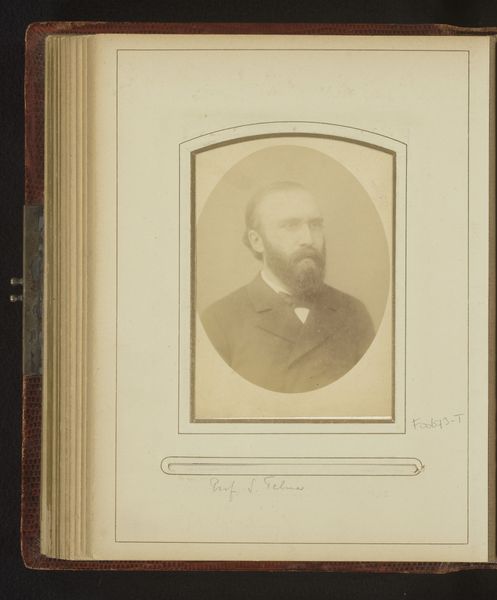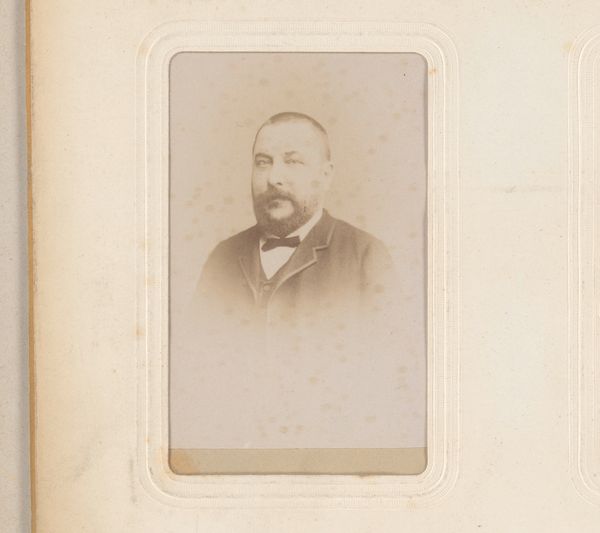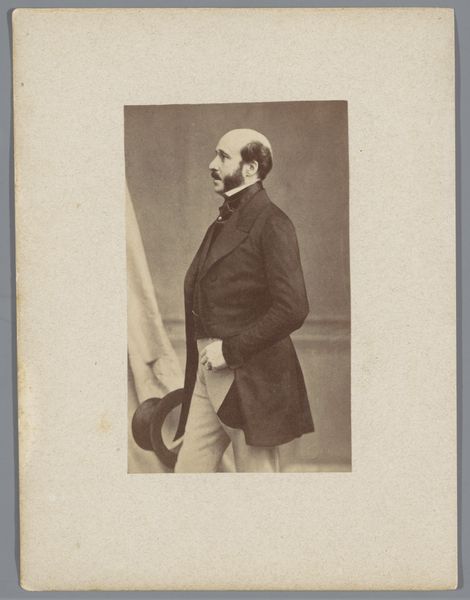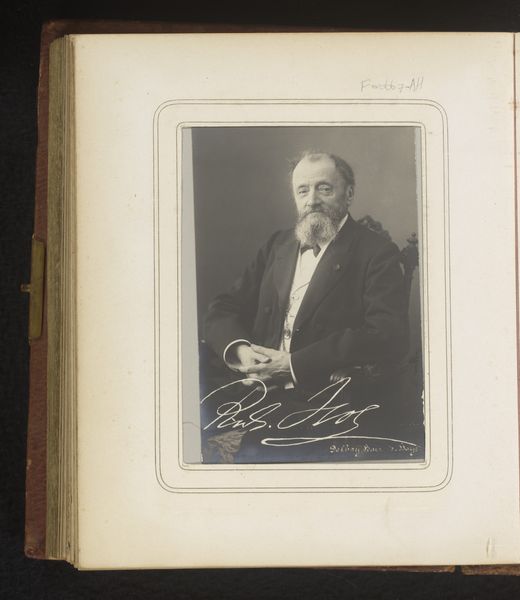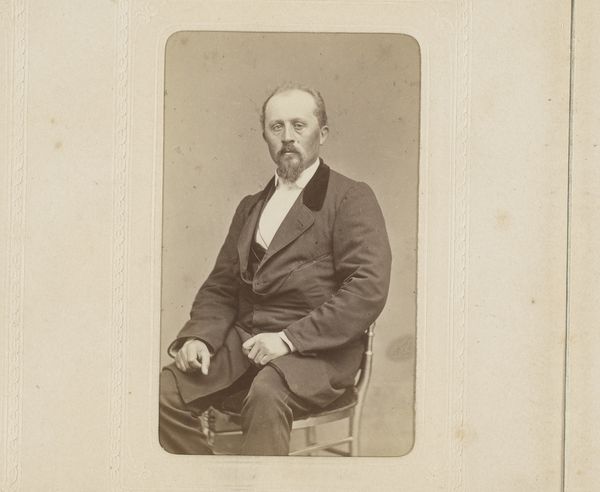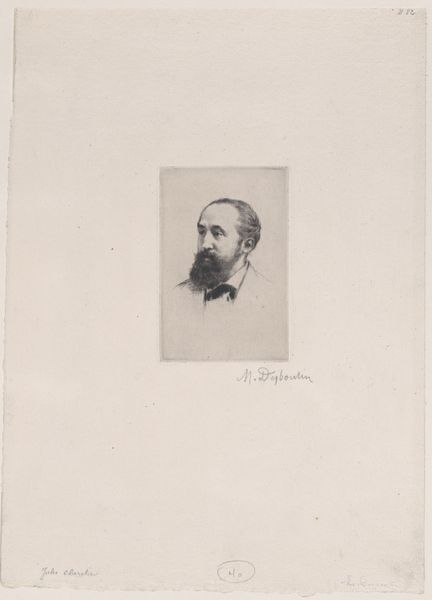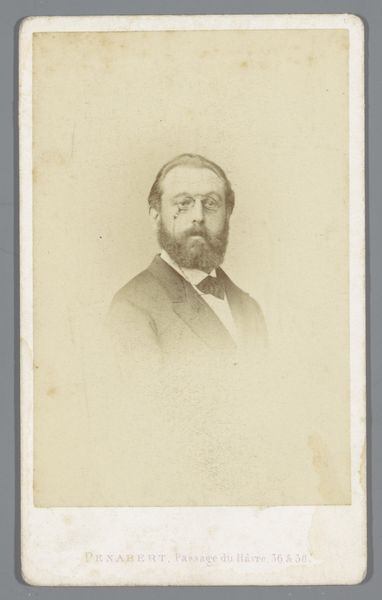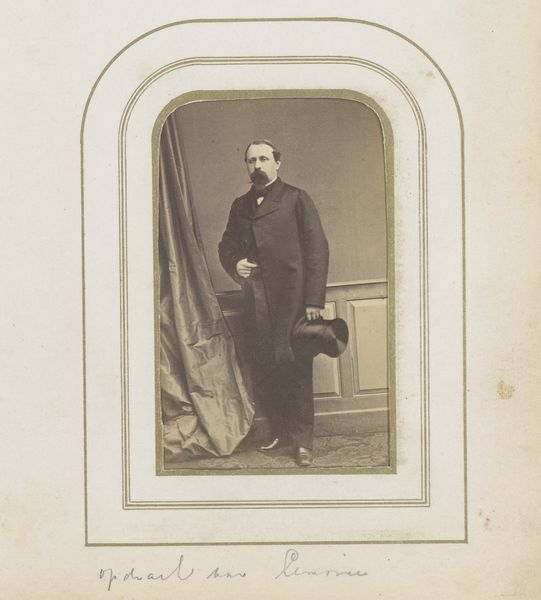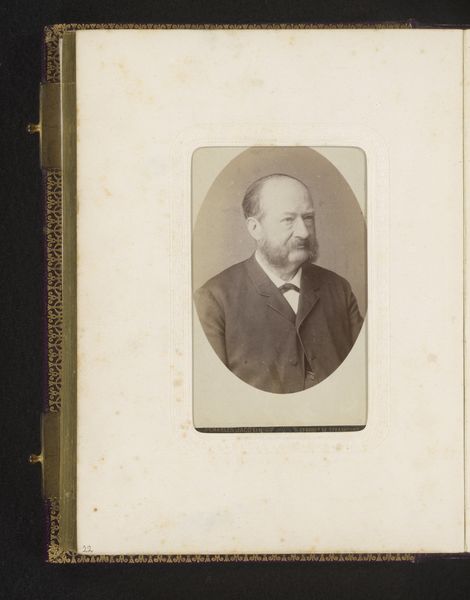
print, photography, albumen-print
portrait
photography
albumen-print
realism
Dimensions: height 137 mm, width 95 mm
Copyright: Rijks Museum: Open Domain
This portrait of Edward VII, King of the United Kingdom, is a photograph, most likely made in the late 19th century. The image is albumen print, a process that involves coating paper with egg white to create a glossy surface for the photographic emulsion. Photography, even in its early days, involved both chemistry and mechanics. The photographer had to understand the properties of light-sensitive materials, how to prepare and coat them, and how to operate a camera and darkroom equipment. More broadly, the photograph speaks to a period of intense industrialization and the rise of mass media. Photography democratized portraiture, making images of people widely accessible. It also changed the labor of image-making. Traditional painters were highly skilled individuals, but the photographer was more of a technician, operating machines and managing chemical processes. The rise of photography also fueled the growth of a consumer culture, as people sought to collect and display images of themselves and others. Considering the material and its making helps us understand the photograph as a product of its time, reflecting the changing relationship between art, technology, and society.
Comments
No comments
Be the first to comment and join the conversation on the ultimate creative platform.
